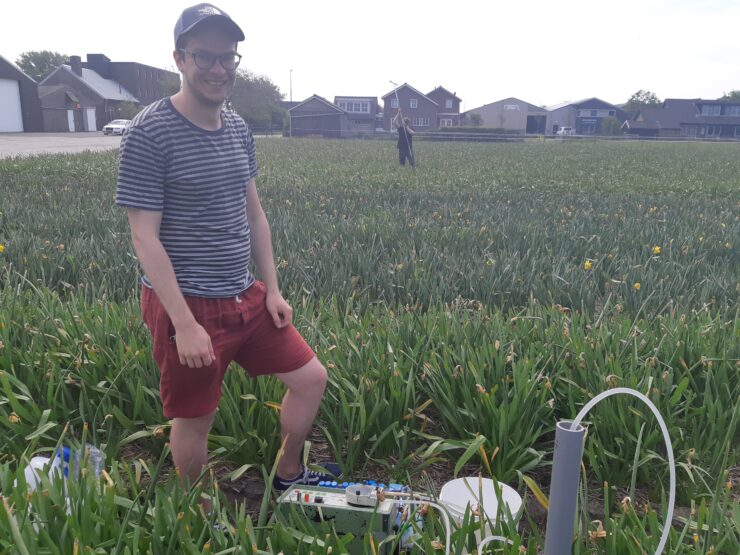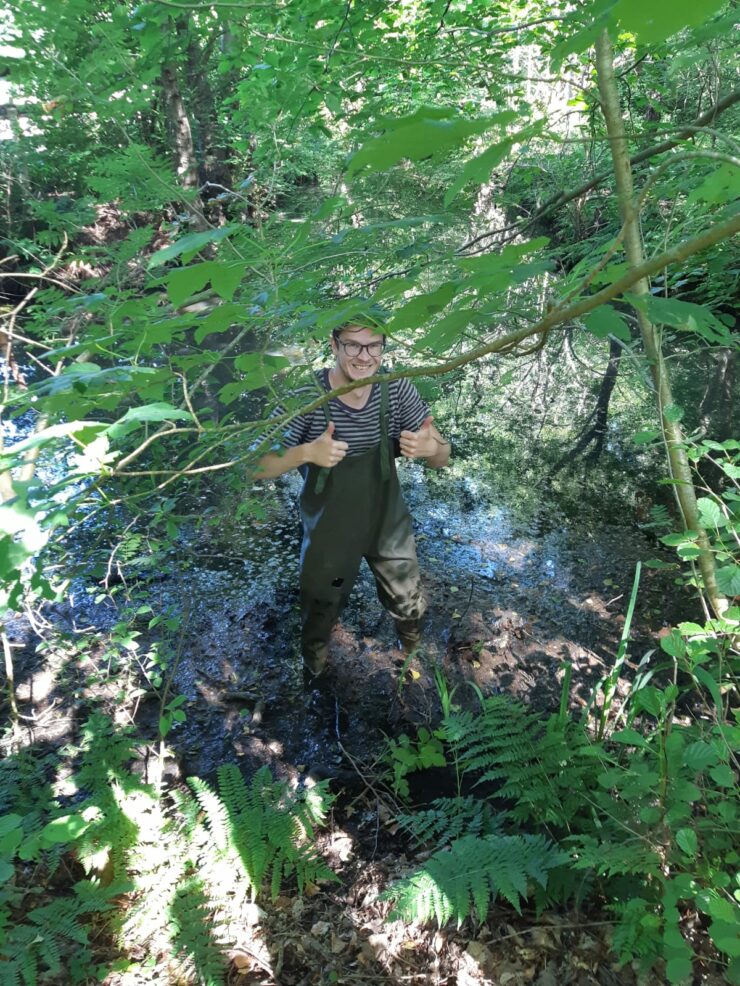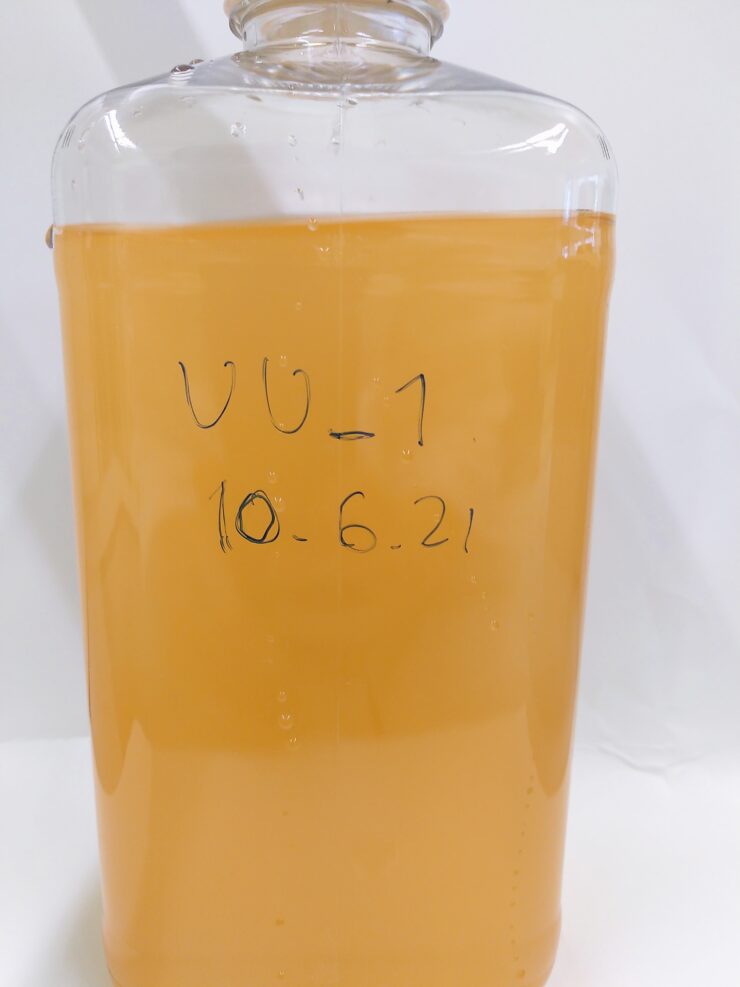Blogs
Hi dear blog post reader!
I am Ville, working at Eawag in Switzerland. My work revolves around the oxidation of iron in the presence of phosphate and numerous other solutes and how they all together affect the structure and phosphate binding capabilities of iron solids. In this blog, I would like to share some of my experiences during my P-TRAP secondment to Deltares in Utrecht this summer. Initially, my secondment was planned for April – May 2020, but due to Covid, everything was postponed to this year.
|
The goal of the secondment was to collect groundwater and solid suspensions from agricultural sites rich in iron (Fe) and phosphate (P). These samples were analogous to my experiments in the laboratory, where I oxidised Fe in the presence of P, silicon (Si), dissolved organic matter (DOM), and other solutes to see how they affect on Fe-mineral transformation and P-binding capabilities over time. |
 Collecting groundwater in a tulip field (Picture: Victoria Barcala) |
 Getting my overalls dirty in a ditch (picture: Victoria Barcala) |
 Aerated groundwater in the laboratory. The orange color originates from iron oxides. |
The solids I collected were analysed with different microscopical and spectroscopical methods to reveal the structure and shape of Fe-and calcium (Ca)-solids forming.
I took the field samples to the laboratory at Utrecht University, aerated the anoxic groundwater, and collected solution and solid samples. My goal was to monitor how P is initially bound to Fe and released and potentially bound back into Ca-carbonates or Ca-phosphates. Especially Ca-phosphates require that the pH of the water increases. This increase in pH may happen if anoxic groundwater rich with CO2 with pH 6 seeps into surface water, allowing CO2 to outgas, which increases the pH of the solution. Ideally, over time this would enable Ca-phosphates to form. They are more stable than Fe-oxides towards transformations and thus ideal long-term phase for P binding in natural settings.
However, there were some difficulties in this field campaign. When I arrived, there was no rain in several weeks (a bit unexpected from the Dutch weather). Because of this, the groundwater tables were low, and flow was even inversed from the ditches into the groundwater. Nevertheless, working with Victoria (ESR3) from Deltares, we managed to collect groundwater from multiple sites; for example, a tulip field with a high loading of P and Ca in the groundwater, anoxic water from a bottom of a forest stream, and groundwater from another forest. Based on the results so far, initially, P concentration decreases and is bound to Fe during oxidation. However, in the water with high Ca, the concentration further decreases over time. Clearly, the effect of Ca in P removal is on the work!
Everything was not just work: I also visited Amsterdam with other P-trap colleagues. We went to the Van Gogh museum and the Amsterdam zoo, which were nice experiences. I, of course, cycled a lot, especially around Utrecht. The weather was nice the whole time (apart from the lack of rain). Sun was shining more or less every day and I managed to get very nice tanning from all the work in the tulip field!
After all, the secondment was very positive experience and I would like to thank Leonard and Victoria from Deltares from hosting me, and Mingkai (ESR8) for helping me in the Utrecht University laboratory.

